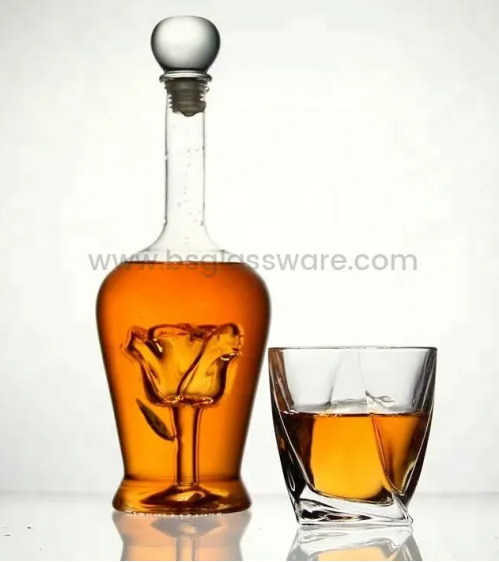Why Are There Different Types of Beer Glasses?
When it comes to enjoying a refreshing glass of beer, you may think that your choice of glass is irrelevant. However, in the world of craft beer and brewing, the type of glass you use can significantly affect your beer drinking experience. Beer enthusiasts have long recognised the importance of choosing the right glassware to complement the style and flavour of their chosen beer. But why are there so many different types of beer glasses and how do they affect the drinking experience? In this article, we'll explore the fascinating world of beer glasses, examining their history, design and the reasons behind their diversity.

The History of Beer Glasses
The use of specific glassware to serve beer is not a recent phenomenon. It has a long and varied history dating back to the early days of brewing. While early beer drinkers may have used whatever containers were available to them, the idea of using specialised glassware became more and more popular over time.
The development of the beer glass is linked to the evolution of beer itself and the desire to enhance the drinking experience. In the Middle Ages, beer was usually served in wooden wine glasses or ceramic mugs. As brewing techniques and beer varieties evolved, so did the demand for suitable glassware. The 16th century marked an important turning point when the Germans began producing clear glassware that allowed drinkers to appreciate the colour and clarity of their beer. This innovation laid the foundation for the variety of beer glasses we have today.
Designed for the senses
The design of a beer glass is not random; it is carefully crafted to enhance the sensory experience of enjoying great beer. Different types of beer glasses are designed to optimise aroma, flavour, carbonation and visual appeal. Here are some key design elements to consider:
Shape: The shape of the beer glass plays a crucial role in influencing the aroma and flavour of the beer. For example, tulip shaped glasses, often used for strong beers and IPAs, are narrowed at the top to concentrate the aroma, while pilsner glasses are tall and thin to showcase the clarity and effervescence of the beer.
Rim: The rim of a glass affects the way the beer flows into your mouth. Some glasses have flared rims for better aeration and aroma release, while others have narrow rims to focus the beer on specific taste buds.
Thickness: the thickness of the glass affects the temperature of the beer. Thicker glassware insulates the beer and helps keep it cooler, while thinner glassware allows the beer to warm up faster.
Etching and nucleation points: some beer glasses have an etched design or nucleation point on the bottom to promote carbonation and head retention. This feature is especially common in beer and pilsner glassware.
Stemmed or unstemmed: certain beer types, such as stouts and traditional English ales, are often served in stemmed glasses, which help to keep the beer at the proper temperature.
Types of Beer Glasses
Now that we've discussed the design principles behind beer glasses, let's dive into some of the common types of beer glasses and the styles of beer they're best suited for:
Pint Glasses: pint glasses, also known as shaker glasses, are a versatile option for a variety of beers, including ales, wheat beers, and stouts. Its simple design and wide spout allow for easy sipping and enjoyment of the aroma.
Pilsner Glass: The tall, slender pilsner glass is perfect for showcasing the clarity and effervescence of pilsners and other pale ales. Its shape also concentrates the aroma and enhances the overall drinking experience.
Tulip Glass: With its bulbous body and flared rim, the Tulip Glass is ideal for strong ales, Belgian-style beers and IPAs. It releases complex aromas and enhances the tasting experience.
Weizen glasses: Weizen glasses are designed for wheat beers such as hefeweizens and witbiers. These glasses are tall and narrow, providing plenty of room for the beer's head and capturing its refreshing citrus aroma.
Thin Mouth Wine Glasses: Thin mouth wine glasses are often used for strong beers such as barleywines, imperial stouts and brandy beers. The wide bowl and narrow top concentrate the aromas, while the short stem prevents the beer from heating up too quickly.
Stout Glasses: Stout glasses are designed to highlight the rich roasted flavours and aromas of stouts, porters and other dark beers. They usually have a wide, open lip to promote head retention.
Large beer mugs or mugs: large beer mugs and mugs with sturdy handles are the traditional choice for English ales and stouts. The handles help keep the beer warm while providing a firm grip.
Conclusion
The world of beer mugs is not just a matter of aesthetics or tradition; it is also a matter of It is deeply rooted in the desire to enhance the beer drinking experience. The choice of glassware can significantly affect the aroma, flavour, carbonation and overall enjoyment of your favourite beer. Each type of beer glass is designed for a specific purpose, catering to the unique characteristics of different beer styles.
While there are no hard and fast rules about which glass to use for a particular beer, understanding the design principles and characteristics of the various glass types can help you make informed choices that will enhance your beer drinking experience. So the next time you have a cold brew, consider the glass you use and how it enhances your sensory journey through the world of craft beer. Here's to enjoying the aroma, flavour and visual appeal of beer.

